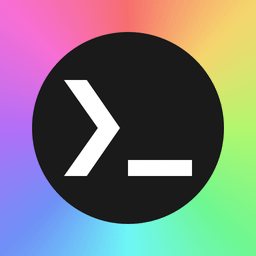

very cool! loving these low-res rices - there’s something really appealing about them. this also reminds me of my chromebook that I’ve done a similar thing with (turn into a writing-focused machine).
also at beehaw


very cool! loving these low-res rices - there’s something really appealing about them. this also reminds me of my chromebook that I’ve done a similar thing with (turn into a writing-focused machine).


I’m not usually a fan of cursors outside of the regular black & white, but that cursor goes perfectly with the whole theme here!


Nice, thanks! I haven’t tried customizing the default KDE bars yet; it’s cool to see they can be changed a decent amount.


Nice, thanks! I haven’t tried customizing the default KDE bars yet; it’s cool to see they can be changed a decent amount.


What are you using for your top bar?


Really clean! Now you just need to theme that pihole dashboard to Nord too ;)


Yup; hopefully there are some advances in the training space, but I’d guess that having large quantities of VRAM is always going to be necessary in some capacity for training specifically.


Yup; hopefully there are some advances in the training space, but I’d guess that having large quantities of VRAM is always going to be necessary in some capacity for training specifically.


So I’m no expert at running local LLMs, but I did download one (the 7B vicuña model recommended by the LocalLLM subreddit wiki) and try my hand at training a LoRA on some structured data I have.
Based on my experience, the VRAM available to you is going to be way more of a bottleneck than PCIe speeds.
I could barely hold a 7B model in 10 GB of VRAM on my 3080, so 8 GB might be impossible or very tight. IMO to get good results with local models you really have large quantities of VRAM and be using 13B or above models.
Additionally, when you’re training a LoRA the model + training data gets loaded into VRAM. My training dataset wasn’t very large, and even so, I kept running into VRAM constraints with training.
In the end I concluded that in the current state, running a local LLM is an interesting exercise but only great on enthusiast level hardware with loads of VRAM (4090s etc).


How far away from your monitor do you sit to see all of the 49”?! It must all be in your peripheral vision, haha. (Edit: oh, I overlooked the ultra wide mention and was picturing a 49” tv type thing, haha. Ultra wide makes more sense!)
I actually went down from two monitors on my desktop to one… nothing wrong with the second monitor now sitting in my closet, but I’m liking the extra space on my desk and it feels more ergonomic to not be swiveling my neck as much.


What font are you using for the clock/taskbar? Looks nice! I’ll have to poke around KDE for that taskbar too, it automatically gave me the icon only version and idk if I like it.


I’d think about it at a high level and then get more granular. What are your favorite riced screenshots? What parts of them particularly appeal to you? On the other hand, are there things about your setup that bother you? Then, take what you like and don’t like and let that guide you in customization.
I am pretty opinionated, so I care about changing little things. Examples of little things I tweaked when installing KDE recently:
For me the rest of the visual adjustments came from picking color schemes, fonts, icons, and wallpapers I like.


That’s helpful; this sounds like a docker issue or qBit issue then. The default qBit location for torrents is /downloads, but you’d need to make sure to point it towards the container volume mapping you’re setting up in docker.
my relevant qBittorrent compose volume mapping is as follows:
volumes:
- /volume1/shared/torrents:/data/torrents
Personally, I don’t separate my torrent downloads by type; I use incoming & completed folders. Here’s how I set up my qBittorrent config:
| Original Value | New Value |
|---|---|
| Session\DefaultSavePath=/downloads/ | Session\DefaultSavePath=/data/torrents/1_completed/ |
| Session\TempPath=/downloads/incomplete/ | Session\TempPath=/data/torrents/2_incoming/ |
| Downloads\SavePath=/downloads/ | Downloads\SavePath=/data/torrents/1_completed/ |
| Downloads\TempPath=/downloads/incomplete/ | Downloads\TempPath=/data/torrents/2_incoming/ |


This should just be part of configuring Sonarr/Radarr settings correctly. Do you have a red message in the settings that says a download client is missing, or have you filled out the download clients settings section with your torrent client info? If yes, have you checked the “auto import from client” box? and, have you set your root library folder in the media management section?


Great article! I appreciate how it addresses the commonly raised reasons and points to a way forward.


Haha, “an app from 10 years ago” is so true. I kept using AlienBlue through thick and thin for exactly the reason – it’s heavily text focused and all about the comments. No “cards” design or auto-playing videos or what have you.
Never heard of them, but just looking at a registrar comparison chart, their renewal costs are pretty high. eg. $20 for .wiki renewal at Porkbun and $30 at Hover. Maybe they bundle in a lot of services along with it that make the price worth it? but unless you’re taking full advantage of those (if they’re offered) then you could def get a better deal elsewhere.
Namecheap has okay starting prices but man their renewal prices aren’t great compared to other registrars.
I just transferred all my domains out of Namecheap into Porkbun. I think Porkbun is 10 to 50 cents more expensive than Cloudflare, but they seemed a bit easier to use and could hold all my TLDs. So far, a way better experience than Namecheap!
I don’t know anything about GPU design but expandable VRAM is a really interesting idea. Feels too consumer friendly for Nvidia and maybe even AMD though.